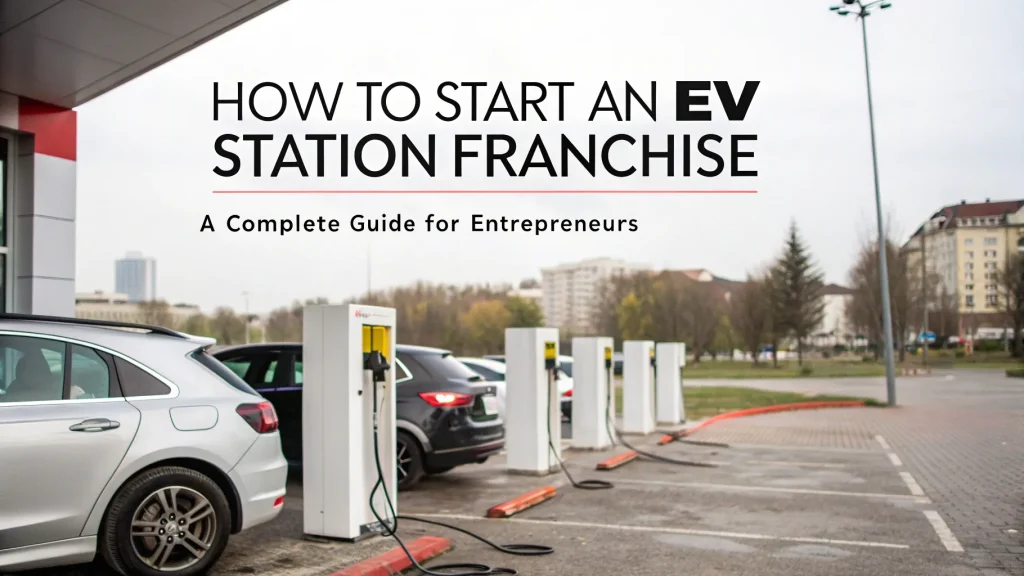In comparison to the global standards, India has seen a remarkable growth and potential in theme park industry although it is undeveloped yet. With the increasing disposable incomes and a surge in urbanization levels, the organized leisure activity sector is on its way to becoming an essential part of the leisure and entertainment industry. This is what startups, and aspiring entrepreneurs should know about India in order to enter the market. On this, Niir Project Consultancy Services (NPCS) offers a huge survey and consultancy to get through the labyrinth of different stages and methods.
Overview of India’s Theme Park Industry
The theme park sector in India is at a nascent stage of development and has witnessed exponential growth. The nation’s rich cultural heritage and historical significance provide unique themes that can attract both local and international tourists. Major cities like Mumbai, Bengaluru, and Hyderabad have seen the development of theme parks that utilize advanced technology and thematic storytelling to improve visitor experiences.
Market Size and Growth Potential
Industry estimates suggest that the Indian theme park market was worth around $500 million recently and is expected to grow at a compound annual growth rate (CAGR) of about 10-12% over the next decade. The rising popularity of theme parks as family entertainment centers significantly contributes to this growth. Moreover, the arrival of global companies and collaborations for technology modification in ride mechanics and virtual reality experiences is expected to provide an additional opportunity to the market.
Key Players
But some of the bigger players in India such as Imagicaa, Wonderla and Kingdom of Dreams manage to have multiple properties from coast-to-coast at their theme parks in the country. These parks feature rides, shows and virtual reality pack in a quality for all age groups.
Government Initiatives
Theme parks are seen as major tourism boosters by the Government of India, and they have been included in broader tourism promotion strategies. Moreover, major boosts to theme parks over traditional tourism attractions have been achieved through initiatives like the ‘Incredible India’ campaign. In addition to this, friendly policies such as land subsidies and exemption of amusement park space rents are stimulating the growth of amusement parks in the country.
Opportunities and Challenges
Opportunities
Technological Integration
With the likes of augmented reality (AR) and virtual reality (VR), some have predicted that traditional amusement rides might be on their way out, but the two are set to combine and make conventional rides more immersive than ever before.
Thematic Diversity
The diversified cultural fabric of India offers ample scope to create new niche themes which can be a magnet for attracting tourists wanting to experience its culture peppered with entertainment.
Expansion in Tier 2 and Tier 3 Cities
Given that urbanization is a worldwide trend, there remain major possibilities for the growth of theme parks in secondary and tertiary cities as they have no currently operating expressive medium.
Visit this Page for More Information: Start a Business in Media and Entertainment Sector
Challenges
High Capital Requirement
Establishing a theme park requires substantial investment in land, rides, technology, and safety regulations, which can be daunting for new entrants.
Regulatory Hurdles
Navigating the bureaucratic procedures for land acquisition, safety certifications, and environmental clearances can be challenging and time-consuming.
Seasonal Variations and Footfall Dependency
As with all amusement parks, the thematic approach to theme park profitability depends heavily on attendance which can be weather-dependent and changes significantly in economic downturns.
Role of NPCS in Supporting the Theme Park Industry
Niir Project Consultancy Services (NPCS) can be helpful for entrepreneurs and startups who want to get into the theme park business. Our services include:
Detailed Project Reports
Creating full project reports which include market research, specific performance assessment and financial planning.
Technical Consultancy
Expert knowledge in engineering, technology and theme park management to help you build your projects while respecting the best practices of the industry.
Market Research
Please sign in to get an insight on current market trends, consumer needs and behaviors as well as a detailed view of how the competitive landscape looks like.
Navigating Strategic Partnerships and Collaboration
Strategic Partnerships & Collaborations is a key way forward for new theme parks in India. These partnerships are able to encompass technology providers as well as international theme park operators for the enrichment of the thematic authenticity and technological edge of the park.
Related Business Plan: Start Your Own Water Park, Amusement Park Business
Benefits of Partnerships
Technology and Innovation
New parks will be able to include the newest technological trends, such as interactive attractions, cutting-edge ride systems, and immersive storytelling; moreover, by teaming up with international tech firms or specialized theme park solution providers, they can ensure these innovations are seamlessly integrated.
Brand Leverage
Either working with known brands or IPs can give a theme park a better purpose and wider marketing value to attract fans into the gates, increase initial footfall.
Cultural Integration
A joint effort with the local arts and cultural groups can be made to curate such experiences which not only adds value to the domestic tourists but also caters as a unique offer for foreign travelers in demand of novelty by indulging in some cultural meetups.
Best Practices for Collaboration
Clear Objectives
Develop explicit strategic goals for all three partners, and make sure everything is going in the same direction.
Due Diligence
Do comprehensive background checks and due diligence before signing any agreement with potential partners to see if they have a past that is already tested.
Mutual Benefit
Structure partnerships so that they offer mutual benefits, with shared risks and rewards that incentivize all involved parties to contribute their best efforts.
Investment and Funding Avenues
For startups and new businesses entering the theme park industry, securing adequate funding is a major challenge. Understanding the various funding avenues and financial models can significantly ease this process.
Funding Sources
Equity Financing
Attracting investors to take an equity stake in the theme park can provide the necessary capital while distributing financial risk.
Debt Financing
Loans and other forms of debt can be viable, especially if the project can demonstrate potential for high returns on investment.
Government Grants and Subsidies
Governmental fiscal incentives grants and tax reliefs alike will help to provide pull-through as in certainly lower the upfront capex.
Financial Planning
Robust Business Plans
To be able to attract investors or to get a loan for the business, a proper and workable business plan is required. Moreover, it must contain detailed market assessment, financial projections, and how you will become profitable.
Risk Management
Include plans to reduce monetary, logistical, and brand dangers: plans that keep the matter running during hardships.
Marketing Strategies for Success
The first M, marketing which is necessary to draw visitors in the new theme parks! Successfully marketing strategies should not only create awareness, but also generate anticipation and joy before a park opens.
Effective Marketing Tactics
Digital Marketing
Use social media ads, influencers and digital adverts to reach a wide audience on the cheap.
Event Marketing
In conducting pre-launch events, appetizers or sample service days for media and influencers.
Partnership Marketing
Working with schools, corporates and travel agents for bulk bookings is another way to get a flow of visitors throughout the year.
Branding
Unique Brand Identity
Establish a distinct, compelling brand that appeals to the target audience and differentiates the park from competitors.
Customer Experience Focus
Make sure every marketing touchpoint is a true reflection of the quality and ethos of the park which will help increase customer satisfaction across the board.
Future Outlook
The Indian theme park sector is in a rapid expansion stage. Moreover, entrepreneurs must compete with international brands, new technologies, and ever-changing consumer expectations to stay ahead. The ability to change and be ready for shifts in the market and new opportunities is compulsory. That being said, subject to proper planning and execution, the future for theme parks in India does look bright.
NPCS is committed to serve the growing sector with its specialized consulting services. Moreover, we are dedicated to helping our clients realize their dreams and bolster the ever-growing leisure & entertainment industry of India.
Sustainability and Environmental Considerations
The need of the hour in the present scenario is to incorporate sustainability as an integral part and not merely a choice; moreover, its relevance is even greater in sectors like theme parks, which are resource-heavy. As the Indian theme park industry grows, it will need to adopt sustainable practices both to cement its future and to comply with increasing environmental regulations.
Sustainable Practices for Theme Parks
Eco-friendly Design
The building and maintenance of the theme parks in line with green building standards and healing environment concept while using eco-friendly materials, is also effective in curbing carbon footprint by maximizing energy efficiency.
Water Conservation
Conservation of water, a scarce resource for many parts of India, has numerous benefits; moreover, it can be achieved through using drought-resistant landscaping and implementing water recycling systems.
Waste Management
Creating their own complete waste management scheme with focuses on reducing plastic consumption, recycling, and composting will favor the environment.
Benefits of Embracing Sustainability
Cost Efficiency
In addition to earning tax savings through business rates reliefs, long-term earnings can also come from new forms of savings, be it lower utility bills enabled through green measures or having preferential treatment from the government when funding particular projects.
Brand Image
The sustainability commitment strengthens recognition with consumers, who are becoming progressively more concerned about environmental matters, including among a younger audience.
Regulatory Compliance
Apart of avoiding getting fined, being compliant the environmental regulations may put a park in the position of leading sustainable tourism effort.
Leveraging Local Cultures and Heritage
The combination of exciting global IP and rich cultural location-based themes make India truly unique a market for this kind of attraction. Incorporating local culture in theme park design not only enriches the visitor experience but jitters cultural conservation and education.
Cultural Integration Strategies
Themed Areas
At the same time, designing parts of the park to mirror different aspects from across various Indian states or important historical epochs can combine learning with visual grandeur.
Cultural Performances
That could be a major draw, with live performances including dance music and drama that portray local traditions.
Artisan Collaborations
It also might mean starting to produce some of the park merchandise locally by working with local artisans, or even just selling their wares in the park so that more people get a chance to buy them and they have a broader market.
Advantages of Cultural Integration
Unique Positioning
The Indian theme parks can distinguish themselves from others on a global scale, by providing unique experiences, so that they are not ‘Me Too’ in a globally competitive marketplace.
Community Support
Engaging local communities in the park’s development and operations can build goodwill and a sense of ownership among the local population, enhancing public relations and customer loyalty.
Watch Video: How to Start an Amusement Park | Theme Park Business
Expanding the Scope of Entertainment
The future of India’s theme park industry may also involve expanding beyond traditional rides and attractions to include a wider range of entertainment options:
Educational Attractions
School groups, families seeking hands-on educational opportunities may make use of interactive exhibits and educational programming in the areas of science, history, or culture.
Seasonal and Festival Celebrations
People may come to visit the festive event & they do not have to do any work at their place, so you nailed bonus!
Sports and Adventure Activities
The addition of sporting facilities, adventure sports and outdoor activity would also make it a great place to visit for many people encouraging repeat custom.
Conclusion
Adventures in Indian theme park industry is plenty but challenges are more This way and by combining innovation sustainability, closeness to local culture and mixing new and traditional entertainment options, a park which is brand new at first can get enough appeal to start saying the grown-up parks that they are not necessarily monotone at all. Your theme park project will assuredly be profitable and enhance India’s social and ecological township due to NPCS guidance in defeat mediocrity and squander nothing starts to end savoir-faire.
NPCS (Niir Project Consultancy Services)
Businessmen and entrepreneurs might benefit from obtaining detailed reports from NPCS (Niir Project Consultancy Services), and they soon recognize this through resource sales. Following are few justifications for purchasing NPCS report:
Detailed Market Analysis
NPCS reports include market research reports to understand market size, growth rates, and demand and supply volumes of the particular special area, as well as the analysis of key players.
Feasibility Studies
Derived feasibility studies or reports on how doable are those projects enable potential investors to ascertain if they have an opportunity/exist together with the returns and risks involved.
Industry Trends and Forecasts
NPCS Reports enables the stakeholders to recognize some emerging trends along with potential upcoming forecasts, which can facilitate an organization in their strategic decision-making.
Technological Insights
File reports under technological insights to show how new technologies impact a specific sector.
Regulatory Framework
Understanding the regulatory background of an industry or market will be a key variable for business planning. The NPCS reports, provide all the details relating to formulating regulations and possible modifications.
Competitive Landscape
NPCS reports further describes the competitive landscape within an industry which includes top comprehensive company profiling of leading players and analysis of each player such as a company overview, revenue shares, market forecast.
SWOT Analysis
These reports include SWOT (Strengths, Weaknesses, Opportunities and Threats) analysis relative to the sector to make clear for investors how those factors will help in gaining or losing more from this sector.
Investment Guidance
NPCS reports are perfect reason for the entrepreneurs wishing to know more about facets of the industry and for fresh assays, buyers and other interested parties in it.
Business Planning
Having a business plan in place is a must for establishing or advancing an existing venture. RPCS market research reports cover forecasts, sales, strategies, and market share to help you understand your business.
Tailored Information
Furthermore, it allows for specific requirements related to business with the guarantee that most renewal information is relevant and useful.
In conclusion, NPCS report is really valuable for identifying a sector, decision-making and launching any product into the market or investment strategy






